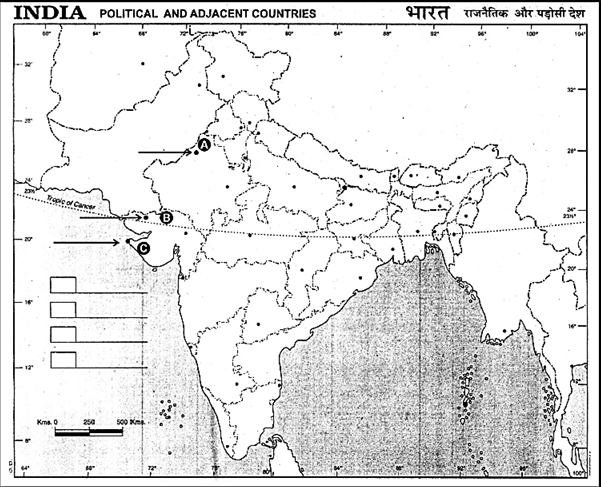 Short Answer Type
Short Answer TypeThe burials in Harappan sites reveal the economic and social differences amongst the people living within a particular culture. Give two evidences in support of your answer.
What evidences have been put forward to explain the collapse of the Harappan Civilization ?
On the given outline political map of India locate and label the following with appropriate symbols:
(a) Ajmer, a territory under Mughals.
(b) Gwalior, a centre of the Revolt of 1857.
On the same map three places related to the mature Harappan sites has been marked as A, B, C. Identify them and write their names correctly on the lines drawn near them.
Why were many Zamindaris auctioned after the Permanent Settlement in Bengal ? Give two reasons.
‘Kabir was and is to the present a source of inspiration for those who questioned entrenched social institutions and ideas in their search for divine.’ Explain.
“The nobility was recruited consciously by the Mughal rulers from diverse ethnic and religious groups.” Justify.
Examine the circumstances that led to the passing of ‘Limitation Laws’ by the British in 1859.
(i) In 1859 the British passed a Limitation Law that stated that the loan bonds signed between moneylenders and ryots would have validity for only three years.
(ii) This law was meant to check the accumulation of interest over time.
(iii) Cotton boom and the American civil war.
(iv)The ryots were dependant on money lenders for survival.
(v) The money lenders refused to extend loans to the ryots.
(vi) Money lenders violated the customary norms.
(vii) Rural indebtedness.
(viii) Ryots saw money lenders as devious and deceitful.
(ix) Manipulation and forging of Peasant accounts by money lenders.
(x) They complained of money lenders for manipulating laws and in 1859 this law was passed to check the accumulation of interest over time.
